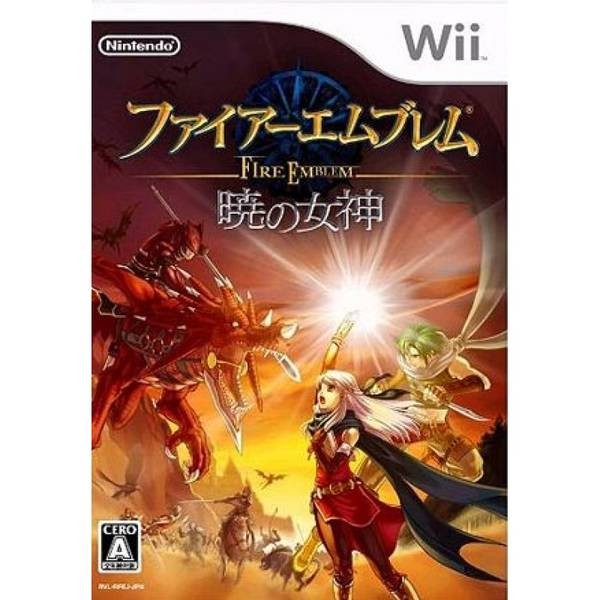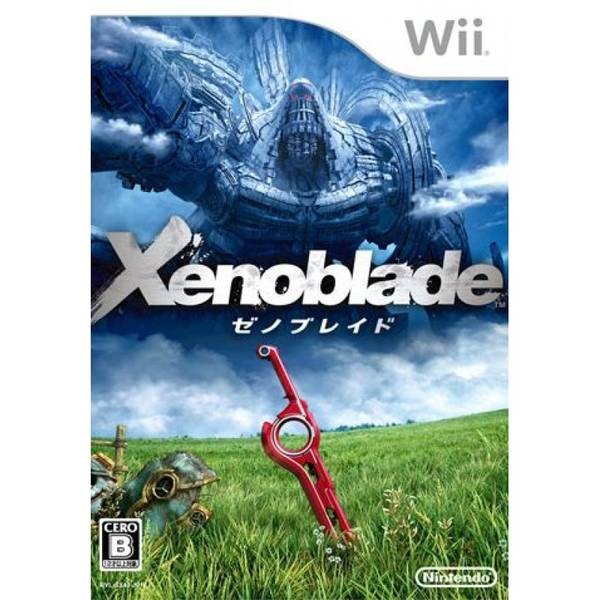聖火降魔錄 曉之女神
《聖火降魔錄 曉之女神》(Fire Emblem: Radiant Dawn / ファイアーエムブレム 暁の女神)是由Intelligent Systems開發、任天堂發行,於2007年在日本與北美推出,是《聖火降魔錄 蒼炎之軌跡》的直接續作,也是系列在Wii上推出的第一款作品。延續GameCube版《蒼炎之軌跡》的世界觀、角色與戰略玩法,同時透過劇情推進與陣營變化,構成宏大且多層次的敘事結構,是當時少數以多視角、多陣營分段敘事手法構成的日式戰棋 RPG。
劇情方面,故事背景設定在名為「泰利烏斯(Tellius)」的大陸,距離前作事件結束三年後。經歷戰亂的達因王國被貝格尼翁帝國軍事統治,人民飽受壓迫。主角「米卡雅(Micaiah)」率領反抗軍「曉之團」,試圖推翻貝格尼翁的統治,恢復達因的獨立。隨著故事發展,將隨不同陣營輪流操控,從米卡雅領導的「曉之團」、艾克(Ike)領導的「傭兵團」、以及神使塞莉卡(Sanaki)與獸人族聯軍等多方勢力展開視角切換,逐步揭露泰利烏斯大陸背後更龐大的神話與宿命。
劇情最大特色在於其四部構成的章節式結構。第一部以米卡雅為主角,描寫貝格尼翁壓迫下的反抗與生存;第二部則切換至克里米亞內部政變,描述皇女艾莉西亞的艱難抉擇;第三部則是兩大軍團全面開戰,艾克與米卡雅被迫兵戎相見,雙方各有立場與信念,劇情極富張力;第四部則隨著遠古女神「雅娜法(Yune)」與「阿薩拉(Ashera)」的復甦,世界進入最終審判,所有角色集結展開終極決戰。人物刻劃細膩,角色互動與立場衝突鮮明,處處充滿系列粉絲熟悉的戰友情、信仰、宿命與犧牲主題。
在操作與玩法方面,繼承並強化系列傳統的「回合制戰棋策略」系統,戰鬥以棋盤狀地圖為舞台,雙方輪流行動,移動單位、攻擊、使用道具或技能。操作支援 Wii遙控器橫握、與GameCube控制器,整體仍以按鍵式操作為主,並無體感操控,忠實保留系列本格戰棋風格。
系統特色之一是「陣營切換」與「部隊傳承」設計。隨劇情推進,需操控不同勢力角色,而部分《蒼炎之軌跡》的角色也會延續成長,若有遊玩前作,可透過連動功能將角色資料與數值繼承至本作,讓熟悉的角色能力與羈絆延續。
戰鬥系統上,除一般職業與兵種克制(如槍剋劍、劍剋斧)外,強化獸人族「變身」能力,不同獸人角色在戰鬥中隨變身狀態改變攻防與移動能力,形成獨特戰術運用。角色等級上限40,部分高階職業可進行「上級職進化」,學習專屬技能,增加戰略性與自由度。此外,支援經典「永久死亡」系統,角色一旦戰死便無法復活,為玩家行軍布局與風險管理增添極高壓力與挑戰性,也讓劇情與戰鬥結果緊密相連。
市場評價方面,在日本與北美上市後皆獲得不錯反響。日本《Famitsu》給予33/40 分,讚賞在戰棋系統、職業配置與劇情張力上的深度,但也指出畫面表現承襲 GameCube時期水準,未能充分發揮Wii硬體性能。
歐美媒體如IGN給予8分,認為戰鬥系統成熟且策略深厚,角色設計優秀,劇情結構大膽,尤其是多陣營視角與角色信念衝突設定相當少見。不過也指出新玩家若未體驗前作,對世界觀與角色關係理解門檻較高,且遊戲難度偏高、永久死亡系統對入門玩家不太友善。Gamespot給予7.5分,稱讚戰棋玩法耐玩紮實,職業轉職與獸人變身戰術極具魅力,但同樣認為畫面與音效未達Wii主機應有水準,對新手略顯不親切。
儘管如此,在《聖火降魔錄》系列粉絲之間,被譽為劇情最黑暗、角色立場最複雜、戰略深度極高的作品之一,尤其在敘事結構與世界觀鋪陳上極具野心,讓人印象深刻。對於喜愛經典戰棋 RPG,或對《蒼炎之軌跡》世界觀有情感的玩家,《曉之女神》是不可錯過的正統傑作。
Fire Emblem: Radiant Dawn (ファイアーエムブレム 暁の女神) is a tactical RPG developed by Intelligent Systems and published by Nintendo. Released in 2007 in both Japan and North America, it is a direct sequel to Fire Emblem: Path of Radiance and marks the series’ debut on the Wii console. Continuing the world, characters, and strategic gameplay of the GameCube title, this entry builds a vast, multi-layered narrative through shifting perspectives and factions. At the time, it stood out as one of the few Japanese tactical RPGs to employ segmented storytelling with multiple factions and viewpoints.
The story takes place on the continent of Tellius, three years after the events of the previous game. Following a devastating war, the kingdom of Daein has fallen under the military occupation of the Begnion Empire, and its people live under severe oppression. The protagonist Micaiah leads the resistance group the Dawn Brigade in a struggle to overthrow Begnion’s rule and restore Daein’s independence. As the story progresses, the narrative perspective shifts between different factions: Micaiah’s Dawn Brigade, Ike’s Mercenaries, and the joint forces of Apostle Sanaki and the Laguz Alliance, gradually revealing a grander mythological conflict and the destiny entwining the entire continent.
A key feature of Radiant Dawn’s story is its four-part chapter structure.
- Part One centers on Micaiah and depicts the struggles of Daein’s oppressed citizens rebelling against Begnion’s tyranny.
- Part Two shifts focus to internal unrest within the Crimea Kingdom, highlighting Princess Elincia’s difficult decisions to maintain peace.
- Part Three escalates into full-scale war between two major armies, with Ike and Micaiah forced to face each other in battle, each with their own convictions, giving the narrative tremendous tension and moral complexity.
- Part Four sees the resurrection of the ancient goddesses Yune and Ashera, as the world enters a final judgment and all characters unite for an ultimate battle.
The story is noted for its intricate character development, vivid factional conflicts, and recurring series themes of friendship, faith, destiny, and sacrifice.
In terms of gameplay, Radiant Dawn inherits and enhances the series’ classic turn-based tactical battle system. Combat takes place on grid-based maps, with player and enemy units alternating turns to move, attack, and use items or skills. It supports both sideways-held Wii Remote and GameCube controllers, sticking to traditional button-based inputs without motion controls — preserving the franchise’s core strategic feel.
One of its standout mechanics is the faction-switching system and unit data carryover feature. As the story advances, players control different armies, and some characters from Path of Radiance continue their development here. If players have a Path of Radiance save file, they can transfer character data and stats into Radiant Dawn, preserving familiar characters’ growth and bonds.
In the battle system, beyond the traditional weapon triangle (lances beat swords, swords beat axes, axes beat lances), the game significantly enhances the Laguz (beast tribes) transformation mechanic. Different Laguz units gain altered attack, defense, and mobility stats when transformed, creating unique tactical opportunities. Character levels cap at 40, with certain classes eligible for tier-three promotions, unlocking exclusive skills and expanding strategic variety and freedom. The game also retains the classic permanent death system — fallen characters remain dead for the remainder of the game — adding significant tension and risk management, with every move directly impacting both the story and gameplay outcome.
In terms of reception, the game was well-received in both Japan and North America. Japanese gaming magazine Famitsu awarded it a score of 33/40, praising its strategic depth, class variety, and compelling narrative tension, though they noted that its graphics remained on the same level as the GameCube predecessor and didn’t fully leverage the Wii’s hardware capabilities.
Western media generally responded positively. IGN gave it 8 out of 10, praising the game’s mature battle system, strong character design, and ambitious multi-faction narrative structure, noting how rare it was for RPGs to present such clashing viewpoints and conflicting convictions. However, they pointed out that newcomers unfamiliar with Path of Radiance might find the world and character relationships difficult to grasp, and that the game’s high difficulty and permanent death system might be intimidating for beginners. Gamespot rated it 7.5, commending its addictive tactical gameplay, engaging class promotions, and the unique beast tribe mechanics, while echoing concerns that its visuals and audio fell short of what the Wii should offer and that the difficulty curve was steep for new players.
Nevertheless, within the Fire Emblem community, Radiant Dawn is revered as one of the series’ darkest, most morally complex, and strategically demanding titles. Its ambitious narrative structure and world-building left a deep impression on players. For fans of classic tactical RPGs or those attached to the world of Path of Radiance, Radiant Dawn stands as an unmissable and deeply rewarding sequel.
運費計算方式:
貨款滿1000元運費外加90元
貨款1000以下:買1件運費外加 60元,買2件運費外加 70元,
買3件運費外加 80元 ,買4件運費外加 90元
貨到付款外加30元手續費
外島及大陸地區運費另計
付款方式:
線上刷卡:本站採用Paypal線上刷卡
虛擬帳號匯款:屬於您專屬的虛擬帳戶,方便站長查帳使用,本站強力推薦
實體ATM匯款:請將匯款帳號記錄下來至各大銀行ATM提款機轉帳
超商條碼繳費:請列印本站提供的條碼至四大超商繳費
線上轉帳:透過玉山銀行線上ATM轉帳(此系統只支援IE瀏覽器)
貨到付款:本站採用黑貓宅急便貨到付款
其他注意事項:
如需購買線上點數卡請直接跟站長連絡,本站不提供點數卡的線上付款
-
聖火降魔錄 曉之女神
- 定 價: $6,800円
- 售 價: 350.00
- 庫存量: 1 套
- 已賣出: 0 套
 人氣指數: 0.7 / 6 顆星
人氣指數: 0.7 / 6 顆星




